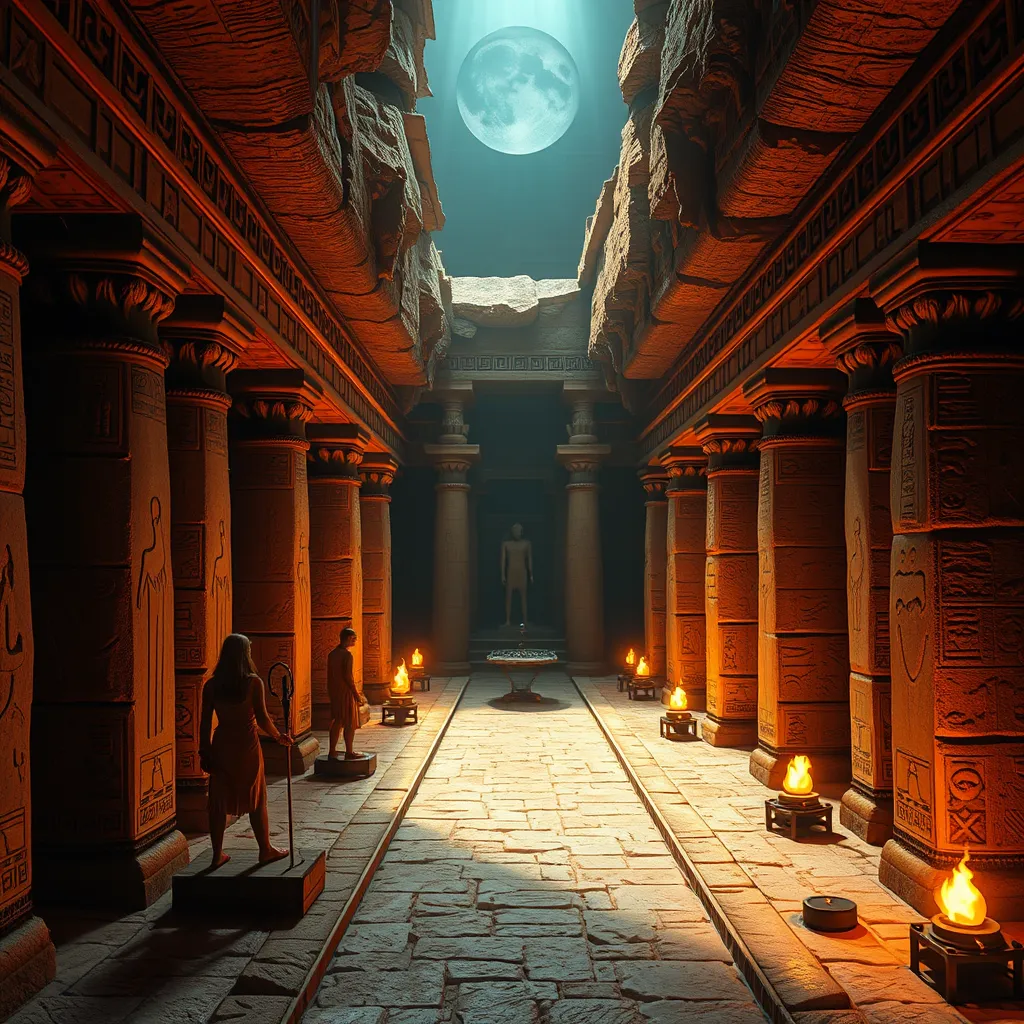The Duat: Exploring the Myths and Legends of the Egyptian Underworld
I. Introduction to the Duat
The Duat, known as the Egyptian underworld, holds a significant place in ancient Egyptian belief systems. It is a realm where the dead journey after their physical demise, embodying the Egyptians’ complex understanding of life, death, and the afterlife. The Duat is not merely a place of punishment or reward; it represents a continuum of existence, where souls navigate challenges and trials to reach eternity.
In Egyptian mythology, the underworld is a labyrinthine domain filled with both peril and promise, reflecting the Egyptians’ reverence for the cycle of life and death. This belief system showcases their understanding of morality, the importance of the afterlife, and the gods’ roles in guiding souls through their journey.
II. The Structure of the Duat
The Duat is intricately designed, comprising various landscapes and realms that souls must traverse. It is often depicted as a dark, winding river with several distinct areas, each representing different aspects of the afterlife. The landscapes include:
- Dark marshes
- Fiery deserts
- Serene fields of reeds
- Foreboding cliffs
One of the key locations within the Duat is the Field of Reeds (Aaru), a paradise where the virtuous souls dwell in peace and happiness. This idyllic realm is often compared to the earthly life that the deceased enjoyed, symbolizing the ultimate reward for those who lived righteous lives.
III. Deities of the Duat
Numerous deities inhabit the Duat, each with specific roles that guide, protect, or judge the souls navigating through its realms. The most prominent among them include:
A. Osiris: The God of the Afterlife
Osiris is perhaps the most significant deity associated with the Duat. As the god of the afterlife, he presides over the judgment of souls and embodies resurrection and rebirth. Osiris represents the promise of life after death and is often depicted as a mummified figure, symbolizing the cyclical nature of existence.
B. Anubis: The Guardian of the Underworld
Anubis, with his jackal head, is the god who oversees mummification and the protection of graves. He guides souls through the Duat and is responsible for weighing the hearts of the deceased against the feather of Ma’at, symbolizing truth and justice.
C. Other Important Deities and Their Roles
Other deities include:
- Thoth: The god of wisdom who records the results of the Weighing of the Heart.
- Horus: The son of Osiris, who plays a crucial role in avenging his father’s death and ensuring the rightful passage of souls.
- Set: The god of chaos who represents the dangers and challenges within the Duat.
IV. The Journey Through the Duat
The journey through the Duat begins at the moment of death. The deceased must navigate a series of trials and challenges that test their worthiness to enter the afterlife. This journey is fraught with dangers, which may include:
- Encounters with fierce monsters
- Crossing treacherous waters
- Overcoming obstacles set by deities
One of the most significant events in this journey is the ‘Weighing of the Heart’ ceremony. During this ceremony, the heart of the deceased is weighed against the feather of Ma’at. If the heart is lighter, it signifies a life of virtue, allowing the soul to pass into the Field of Reeds. If heavier, the soul faces annihilation, being devoured by the monstrous Ammit.
V. Myths and Legends Associated with the Duat
Numerous myths and legends are intertwined with the Duat, enriching its narrative and significance:
A. The Story of Osiris and His Resurrection
The tale of Osiris is central to Egyptian mythology. Betrayed by his brother Set, Osiris is killed and dismembered. His wife, Isis, retrieves his body and resurrects him, allowing him to become the ruler of the Duat. This myth symbolizes the themes of death, resurrection, and eternal life.
B. The Journey of Ra Through the Duat Each Night
Ra, the sun god, embarks on a nightly journey through the Duat, battling the forces of chaos and darkness. This journey symbolizes the cycle of life and death, ultimately leading to the rebirth of the sun each morning, reinforcing the Egyptians’ understanding of renewal and continuity.
C. Other Notable Myths Involving the Duat
Various other myths also celebrate the Duat, including tales of souls overcoming challenges and the triumph of good over evil, reflecting the moral and ethical values of ancient Egyptian society.
VI. The Duat in Funerary Practices
The beliefs surrounding the Duat deeply influenced ancient Egyptian funerary customs. Burials were designed to ensure a safe passage for the deceased into the afterlife, incorporating various elements such as:
- Elaborate tombs and burial goods
- Canopic jars to protect the organs
- Amulets for protection against malevolent forces
The Book of the Dead serves as a crucial funerary text, providing guidance and spells to assist the deceased in navigating the Duat. It reflects the Egyptians’ profound understanding of the afterlife and their desire to equip the dead for their journey.
VII. The Duat in Modern Culture
Today, the Duat continues to captivate audiences through various depictions in literature, film, and art. It serves as a rich source of inspiration for:
- Modern novels exploring themes of death and rebirth
- Films that depict ancient Egyptian mythology
- Video games incorporating elements of the Duat and its deities
Moreover, the influence of Egyptian mythology extends to contemporary beliefs and practices, as many individuals draw inspiration from the rich narratives surrounding the Duat and its deities.
VIII. Conclusion
The Duat remains a pivotal aspect of ancient Egyptian culture, reflecting their intricate beliefs about the afterlife and the moral implications of earthly life. Its myths and legends provide profound insights into human beliefs regarding death and the afterlife, showcasing the timeless quest for understanding what lies beyond. The legacy of the Duat continues to resonate, reminding us of the universal human concern with mortality and the hope for eternal existence.




